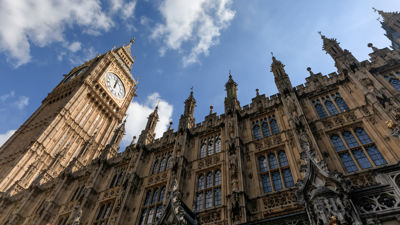The Association of British Insurers (ABI) has today announced a risk-pooling Fire Safety Reinsurance Facility, with cover starting from 1st April 2024.
The Association of British Insurers (ABI) has today announced a risk-pooling Fire Safety Reinsurance Facility, with cover starting from 1st April 2024.
Reinsurance support is now in place to launch the Fire Safety Reinsurance Facility, in an industry intervention to help improve the availability of insurance for certain buildings with combustible cladding and other fire safety issues.
The Facility has been established by (re)insurance broker McGill and Partners with extensive support from the Association of British Insurers (ABI) and through working in partnership with the British Insurance Brokers’ Association (BIBA) which will ensure brokers are made aware of the Facility.
It has two key intentions - to expand capacity for insurers already writing business for affected buildings and to encourage competition across the market so that more firms will provide cover. The ultimate solution remains the urgent need for works to take place to make buildings safe and resilient. The Facility is expected to run for three to five years whilst this happens.
The first step will be for the participating insurers – Allianz, Aviva, Axa, RSA and Zurich – to enter higher-risk buildings they currently insure, and which are awaiting remediation works, into the Facility at the point of their annual renewal. These firms have continued to be active in the market and are the top five firms providing insurance cover for commercial and residential buildings.
The Grenfell tragedy and Dame Judith Hackitt Review exposed significant construction and fire-risk issues related to these buildings. As a result, insurers have to consider the heightened risk of an entire building sadly being destroyed in the event of a fire and have had to limit the amount of cover they could provide because the risk is too high for one firm to cover on its own. Brokers, Freeholders and Managing Agents have instead had to source insurance cover from multiple firms, meaning that several insurers are involved in covering one building, creating a ‘layered’ effect and adding to the cost. It is these buildings which will likely benefit most from the Facility.
Through a reinsurance panel led by Swiss Re, the Facility will enable insurers to expand the capacity they have for writing insurance for affected buildings and take on new business. Over the course of the following 12 months, the insurers will consider which additional buildings can be entered into the Facility as and when their insurance policies are due for renewal. In the longer term, it is hoped that the Facility will reinvigorate competition in the market and encourage other firms to write more business for affected buildings.
Buildings insurance premiums will continue to be based on a variety of risk factors, such as the type and age of the building, previous claims history and other property risks such as storm/flooding or escape of water. External factors such as construction costs and supply shortages will also have an impact.
Mervyn Skeet, ABI Director of General Insurance, commented:
“Supporting leaseholders and making insurance more widely available for higher-risk buildings with fire safety issues has been one of the ABI’s top priorities. I’m grateful to McGill and Partners and all the firms involved for their help in establishing this commercial intervention and hope it will encourage more insurers to enter the market and offer cover for these buildings.
“The industry has been determined in its efforts to support leaseholders, but it cannot solve the issue alone. Establishing the Facility is a significant step forward, but Government intervention and swifter remediation is still the only long-term solution. We strongly encourage Government to consider how it can support the Facility to boost confidence in the market or remove Insurance Premium Tax for affected buildings, to offer more immediate relief to leaseholders.”
More information and FAQS
More information and FAQS on how the Facility will work is available to download via the button below.
Information for brokers representing affected buildings is available from the BIBA.



